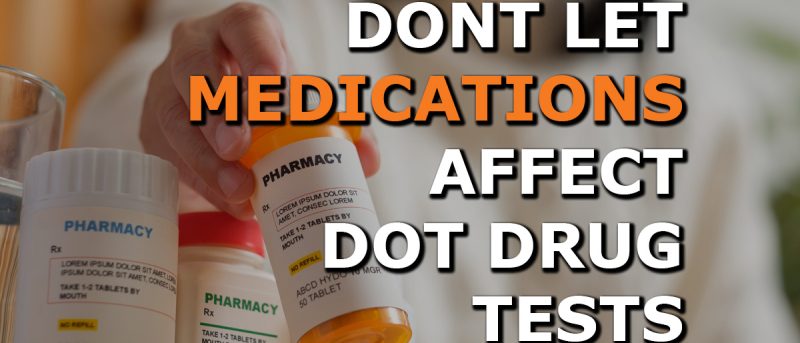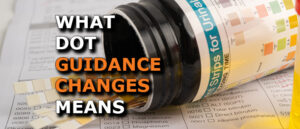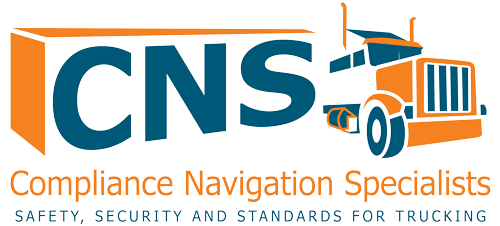Understanding Your Medications and DOT Drug Tests: What Every Driver Needs to Know

For commercial drivers, staying compliant with DOT regulations isn’t just about hours of service, inspections, or keeping your logbooks clean—it’s also about what’s in your system.
Medications you take, whether prescribed, over-the-counter, or herbal, can impact a DOT drug test. Misunderstanding how your medications show up on a test can put your career, safety, and livelihood at risk.
Let’s break down how this works, what you should know, and how to protect yourself.
How DOT Drug Testing Works with Medications
DOT drug tests screen for specific substances, including marijuana (THC), cocaine, amphetamines, opioids, and PCP.
Even if a drug is legally prescribed to you, it can still result in a positive test result.
Here’s the key difference:
- If you test positive but have a valid prescription, a Medical Review Officer (MRO) will contact you to verify your medication and prescription details. If everything checks out and you’re taking it as prescribed, it will not be reported as a violation.
- If you misuse the medication (wrong dosage, expired prescription, someone else’s meds) or it impairs your ability to operate safely, the positive result will stand, and you could face disciplinary or legal consequences.
Common Medications That May Trigger a Positive Drug Test
- Prescription Painkillers (Opioids) – Hydrocodone, oxycodone, morphine
May trigger opioid positives. Also raises safety concerns if causing drowsiness or slowed reaction time. - ADHD Medications (Amphetamines) – Adderall, Ritalin
Legally prescribed but can flag for amphetamines; you must show valid prescription proof. - Anxiety or Sleep Medications (Benzodiazepines) – Xanax, Valium, Ativan
Not part of standard DOT panel but could show up in non-DOT or company policy tests. - Medical Marijuana –
Even if legal in your state, marijuana remains illegal under federal law. Any THC-positive result will be reported as a violation, prescription or not. - Over-the-Counter (OTC) or Herbal Products – Some cold medicines, diet pills, CBD oil
CBD products can contain enough THC to trigger a positive. Certain decongestants may flag as amphetamines.
Tips to Stay Compliant and Protect Yourself
- Keep an Updated List of Medications – Always have your prescription details, doctor’s contact info, and dosage on hand.
- Tell Your Prescribing Doctor You’re a CDL Driver – Some medications are not safe for commercial drivers; your doctor can choose an alternative.
- Never Borrow or Use Someone Else’s Prescription – Even one pill can lead to a career-ending positive result.
- Be Careful with “Legal” Cannabis and CBD Products – They are not DOT-safe. Avoid them entirely.
- Read OTC Labels Carefully – Check for ingredients that could cause impairment or a false positive.
- Answer the MRO Promptly – If you test positive, the MRO will call you. Having your RX information ready can make the difference between “cleared” and “violation.”
What Happens If My Prescription Medication Leads to a Positive Drug Test?
If you test positive, here’s the process:
- The Lab Reports the Result to the MRO.
- The MRO Contacts You to review your medical records and prescription.
- If Valid and Taken as Prescribed – The result will not be reported as a violation.
- If Misused or Unsafe – The result stands, and your employer will be notified.
Remember, the best defense is preparation—because one misunderstanding could cost you your job, your license, and your livelihood.
If Drug Test Stays Positive, How to Return to Work
Before a driver can return to duty for safety-sensitive functions, they must complete the return-to-duty process. Once a positive test result is found, the following steps are required:
- Immediately remove the employee from safety-sensitive
- Find a qualified DOT SAP and complete an initial SAP evaluation
- Finish a SAP recommended education or treatment program
- When finished, complete a second SAP evaluation
- If the SAP report is good, complete a return-to-duty observed drug test
Once the company receives the negative result, the driver can begin safety-sensitive functions again.
Then, after the second SAP evaluation, a follow-up testing schedule must be adhered to, which is a minimum of 6 unannounced observed drug tests within the first 12 months of returning to safety-sensitive work and can last up to 60 months, or five years, depending on the SAP recommendation.
Questions about DOT Compliance, Licensing, Audits, Programs, etc.?
Our DOT Specialists are here to help!
What are you searching for?
Is DOT Compliance your Top Priority?
Our DOT Compliance Programs ensure it is your top priority and keeps your business running.
Related Services
Subscribe to our Monthly Newsletter
Receive the latest transportation and trucking industry information about FMCSA and DOT Audits, Regulations, etc.
Related news
Trucking News
Get the latest trucking news on DOT Compliance, Licensing, Audits, and more!

Understanding the Updated DOT Drug and Alcohol Testing Guidance: What Employers Need to Know
For employers who manage safety-sensitive workers subject to Department of Transportation (DOT) drug and alcohol testing, staying compliant is critical. The Federal Motor Carrier Safety

Upcoming Changes to DOT Medical Certification Reporting – Effective June 23, 2025
Starting June 23, 2025, the FMCSA’s Medical Examiner’s Certification Integration Rule will go into effect, fundamentally changing how DOT medical exam results are reported and connected to commercial

CDL DOWNGRADE LETTER? How Clearinghouse Phase 2 Affects Drivers and How To Fix IT
Currently, over 160,000 professional drivers are “prohibited” from driving a commercial motor vehicle (CMV). Downgrade letters have gone out for any CDL driver that has
